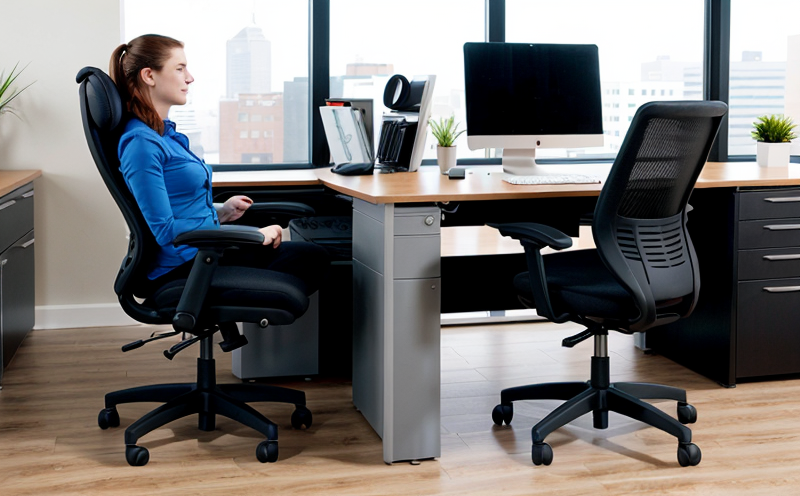BS EN 1335-2 Office Work Chairs Mechanical Safety and Durability Testing
The BS EN 1335-2 standard is a comprehensive framework designed to ensure the mechanical safety and durability of office work chairs. This standard is particularly relevant for furniture manufacturers, quality managers, compliance officers, and R&D engineers who must adhere to high safety and performance standards in their products.
Testing according to this standard involves several key aspects: structural integrity, stability under load, resistance to deformation, and the ability of the chair to withstand repeated stress cycles. The tests are conducted on various components such as the frame, legs, arms, and the seat itself. Compliance with these stringent requirements is crucial for ensuring that office work chairs can safely support users throughout their working day.
The testing process typically includes the following steps:
- Preparation of specimens according to standard methods
- Application of specified loads in a controlled environment
- Observation and measurement of responses such as deflection, deformation, or failure points
- Evaluation against predefined acceptance criteria
- Reporting the results along with recommendations for improvements if necessary
The BS EN 1335-2 standard ensures that office work chairs meet the highest safety and durability standards, making it a critical tool for manufacturers looking to produce reliable products. It helps in identifying potential design flaws early on, thereby reducing costs associated with product recalls or user injuries.
| Test Parameter | Description | Acceptance Criteria |
|---|---|---|
| Static Load Test | The chair is subjected to a specified load for an extended period without showing signs of structural failure. | No permanent deformation, no loss of stability, and the seat must be level after testing. |
| Vibration Test | The chair undergoes a prescribed vibration cycle to assess its ability to withstand dynamic forces. | Maximum permissible oscillation amplitude does not exceed specified limits. |
| Impact Load Test | A sudden impact load is applied to simulate real-world use scenarios where the chair might be subjected to unexpected stresses. | The chair must remain stable and not exhibit any signs of damage or instability post-impact. |
By adhering to BS EN 1335-2, manufacturers can ensure that their office work chairs are safe and durable, which is essential for maintaining a good reputation in the market. This standard also helps in reducing risks associated with product liability claims and enhances overall customer satisfaction.
Benefits
Compliance with BS EN 1335-2 offers numerous advantages to furniture manufacturers:
- Enhanced Safety: Ensures that chairs meet the highest safety standards, protecting users from potential injuries.
- Better Product Quality: Identifies and rectifies design flaws early in the manufacturing process, leading to higher quality products.
- Increased Customer Trust: Builds confidence among consumers regarding the reliability and safety of the product.
- Cost Efficiency: Reduces the likelihood of costly recalls and warranty claims by identifying issues before they become problems.
These benefits contribute to a stronger brand image and increased market competitiveness, making BS EN 1335-2 an indispensable part of any furniture manufacturer's quality assurance program.
Industry Applications
- Office Furniture Manufacturing: Ensures compliance with international standards for mechanical safety and durability.
- Corporate Purchasing Departments: Provides a reliable benchmark for evaluating the quality of office furniture suppliers.
- Educational Institutions: Guarantees that learning environments are safe and comfortable, promoting productivity among students.
The BS EN 1335-2 standard is widely used across various sectors where ergonomic seating plays a crucial role in enhancing user comfort and safety. This includes offices, schools, hospitals, and even public spaces like airports and train stations.
Competitive Advantage and Market Impact
- Market Leadership: Compliance with this standard sets a benchmark for excellence in the industry, making manufacturers more competitive.
- Premium Pricing Potential: Products that meet these high standards can command premium prices due to their superior quality perception.
- Innovation Incentive: The stringent requirements encourage continuous improvement and innovation in product design and materials.
The market impact of adhering to BS EN 1335-2 is significant, as it not only enhances the reputation of individual manufacturers but also promotes a safer and more efficient work environment for end-users. This standard plays a pivotal role in driving industry standards forward and ensuring that consumers receive high-quality products.





